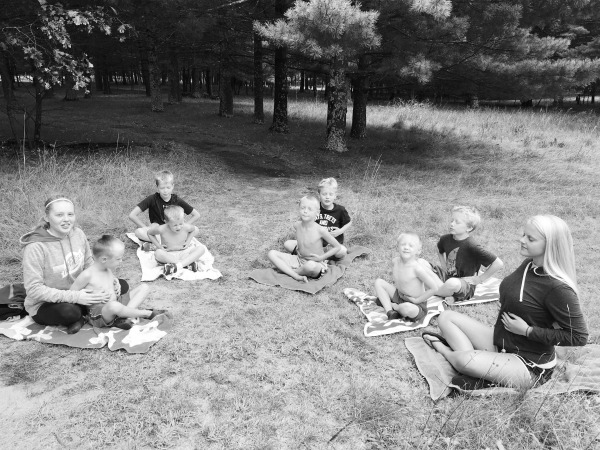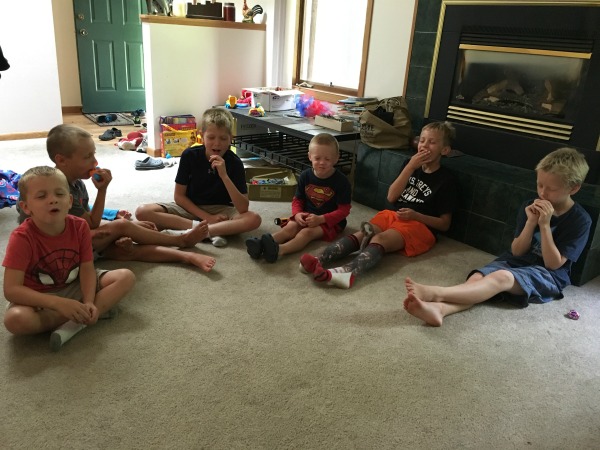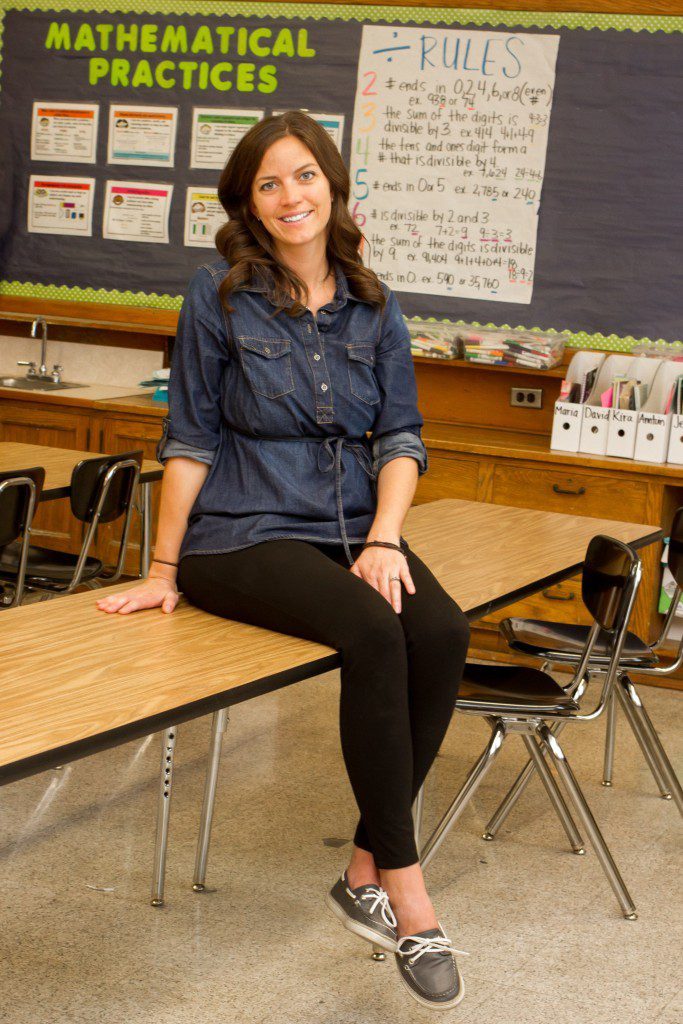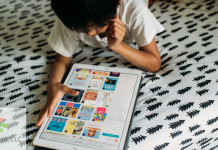I’m sure you’ve heard the buzz around mindfulness and some of the incredible results it has on a child’s emotional and mental health, as well as her achievement in school. If not check out this article from The Atlantic and this collection of studies done by UC Berkeley.
Weave some mindfulness practices into your daily routine and see for yourself the impact it has on both you and your child.
What is mindfulness?
You may be leery of beginning a mindfulness routine in your home. Maybe you don’t think you have the bandwidth to add anything to your already jam-packed schedule, or maybe you aren’t even sure what mindful exercises are.
In Teaching Mindfulness Skills to Kids and Teens, Christopher Willard describes mindfulness as, “a practice of being. If it is ‘doing’ anything at all, it is slowing down and single-tasking.”
That’s it. You might be asking yourself, is that all there is to it? The answer is yes. The truth is that bringing mindfulness into your home is simple.
Simple Mindfulness Exercises
Breathe
Start with the breath. One of the most basic ways to begin a mindfulness practice is to pay attention to your breathing. It may seem easy, but kids need to be taught how to take a deep breath.
Have your child place his hands on each rib with palms facing his body and fingers spread wide. He should try to feel how each breath causes his lungs to move. Engaging your child’s sense of touch will help him recognize the length and depth of each breath.
You may wish to try the following guided visualization of blowing up a balloon,
On each inhale imagine your lungs filling up with air as if you are inflating a balloon. Feel your ribs expand as the oxygen enters your lungs. As you exhale, feel your ribs move back in as they empty. While your lungs release the breath, picture the air escaping from a balloon as you let go of your hold on it.
As with any new behaviors or skills you’d like your child to learn, you must model them for him. Make sure your child is sitting up straight, with a tall back, to allow space for his lungs to expand and retract.
 Meditate
Meditate
Turn off the TV. Silence your cell phone. Shut down the computer. Power off the tablet. You get the idea… Dedicate time each day to reboot your own hard drive a.k.a. your brain.
My favorite basic meditation involves counting on your fingers. It’s great for kids because it gives them something tangible to do while meditating, but it also helps them maintain a focus on their breathing.
Here’s how it works:
Find a tranquil space in your home with few distractions and sit in a comfortable position. Consider propping yourself on a pillow or blanket.
Begin with both hands in fists (not clenched tight, just fingers closed in together). On an inhale, begin counting to 5. Starting with the thumb, release one finger with each number.
At the end of the inhale, all five fingers should be extended. As you exhale, start back at 1 and count to 5. As you say each number, close one finger at a time until all of the air has been released from your lungs and your hand is once again in a fist.
Repeat with the opposite hand. Continue breathing and counting.
Prior to beginning, decide on an amount of time you will meditate and set a timer. With very young children, I would suggest starting with 30 seconds. then increase slowly until you reach your desired amount of meditation time, which can last anywhere between 5-20 minutes.
An ideal time to meditate is before bed, however you and your child can integrate meditation into other parts of your day; perhaps on your commute to or from school, while you wait for a ride after practice, or while bathing.
Focus
Another simple way for your child to become more mindful is to practice focusing on one activity. Pick a task that is already part of your daily routine. (ex. brushing teeth or washing hair). While you do this task each day, really pay attention to what you are doing (NO MULTI-TASKING!).
Engage each sense by asking questions such as, How does it feel? What does it smell like? Taste? Try to keep your focus on the activity the entire time. If you notice your mind start to wander, just bring it back to the experience.
Another perfect time to tune in to a single experience is while eating. A well-known mindfulness exercise developed by Jon Kabat-Zinn is to focus on eating 3 raisins.
By noticing how the raisins look and feel, chewing slowing and paying careful attention to each bite and the flavor sensations in your mouth, you are forced to “single-task.” Detailed instructions on how to engage each sense during the raisin exercise can be found here. You may need to simplify these for younger children. You could also decide to use another food, such as grapes, a ripe pear or small piece of your favorite chocolate.
 Connect
Connect
Good old Mother Nature is the perfect setting to practice mindfulness. Just step outside and bring focus to your senses. How does the breeze feel on your face? Fingers? Toes? Can you feel the sun’s beams shining on your skin? As you look around, what colors do you notice? How many shades of green do you see? Try to get outside each day to notice the sights, sounds, smells and sensations.
~-~-~-~-~-~-~-~
I invite you to pick one or two of these to try today. You may be surprised to see how quickly these exercises will transform your household into a more peaceful and calm environment.
There are hundreds more mindfulness exercises available if you do a quick Google search online.
Remember to have fun and begin where you are. Namaste.
If you’re interested in yoga and mindfulness group classes or private sessions in the Madison area, please contact me at [email protected].
 Madison native Julia Cremin is a teacher, tutor, kids yoga instructor, and most importantly mom to 18-month old daughter, Jacqueline. Her teaching experience includes four years of math, reading and language arts instruction to middle school students in the Madison Metropolitan School District, and working as a private math and reading tutor to children in grades 1-8. She also teaches Yoga and Mindfulness for Kids at the Fitchburg Recreation Center. Aside from working with children, Julia enjoys traveling with her husband and daughter, and tackling home improvement projects. She also spends her free time reading her latest book club title (current selection is Becoming Nicole: The Transformation of an American Family, by Amy Ellis Nutt), training for races (next one is the Fall 15K on Madison’s north side) and practicing yoga at The Studio in downtown Madison.
Madison native Julia Cremin is a teacher, tutor, kids yoga instructor, and most importantly mom to 18-month old daughter, Jacqueline. Her teaching experience includes four years of math, reading and language arts instruction to middle school students in the Madison Metropolitan School District, and working as a private math and reading tutor to children in grades 1-8. She also teaches Yoga and Mindfulness for Kids at the Fitchburg Recreation Center. Aside from working with children, Julia enjoys traveling with her husband and daughter, and tackling home improvement projects. She also spends her free time reading her latest book club title (current selection is Becoming Nicole: The Transformation of an American Family, by Amy Ellis Nutt), training for races (next one is the Fall 15K on Madison’s north side) and practicing yoga at The Studio in downtown Madison.
















